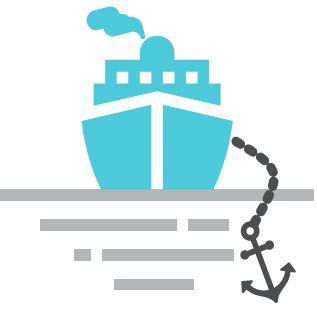Welcome to the website where you can pass online the CES CBT CD-4103 test on the subject «Tank Cleaning 3, Planning of Tank Cleaning Operations». Practice like this will help you as a marine specialist improve your knowledge with the help of online studying and appraisal practice. CES based on practical information and marine specialists experience.
CES tests developed for evaluating seaman basic knowledge by Seagull Company (rebranded as «OTG»), is an evaluating online-tool, used for revealing any professional preparation needed in specific fields of knowledge, defined by STCW.
CES tests have proven themselves as good tools for the selection and recruitment process, as well as advancing the level of knowledge of the current officers and crew. Ocean Technologies Group use various subjects for question creation, which includes:
- Crowd and Crisis Management;
- Integrated Navigation System (INS);
- Ballast water management;
- Handling and Stowage;
- Vessel operation management and safety;
- Marine engineering;
- Maintenance and repair, etc.
Current test contains Seagull CES questions on the subject «Tank Cleaning 3, Planning of Tank Cleaning Operations». Those questions can be used for competence verification specialist capable of preventing accidental situations related with transporting safety, or also for self-examination.
«Tank Cleaning 3, Planning of Tank Cleaning Operations» subject includes theoretical and practical information about advanced training for work on any type of vessel. The test provides advanced training in the safe and efficient cleaning of vessel tanks. It covers the aspects of meticulously planning tank cleaning procedures, adhering to regulatory standards and environmental best practices. Before using tank cleaning chemicals, crucial checks are required, including verifying the compatibility of the chemicals with the tank’s materials (e. g., epoxy coating). Epoxy coating is a protective layer often used in tank interiors; its integrity must be considered during cleaning. The White Water Standard refers to specific criteria for acceptable cleanliness levels in tank cleaning procedures. A detergent is a cleaning agent used to remove contaminants from tank surfaces. “Tank history” encompasses all relevant information about previous tank contents, including details about the products stored and any residues. This comprehensive understanding is essential for effective and safe tank cleaning planning and execution. Ultimately, the test aims to equip professionals with the skills to conduct safe, efficient and environmentally responsible tank cleaning procedures on any vessel.
On this site Crew Evaluation System Test on the subject «Tank Cleaning 3, Planning of Tank Cleaning Operations» contains 12 questions you need to answer with no possibility to go back to previous question. Therefore, we recommend carefully reading each question and making decision with no hurry. In case you have some difficulty answering, you have also possibility to request a hint.
Choose the regime, in which you want to pass CES test:

Use the search below to find question.
Amount of questions: 12.
Right answers marked with this sign .
